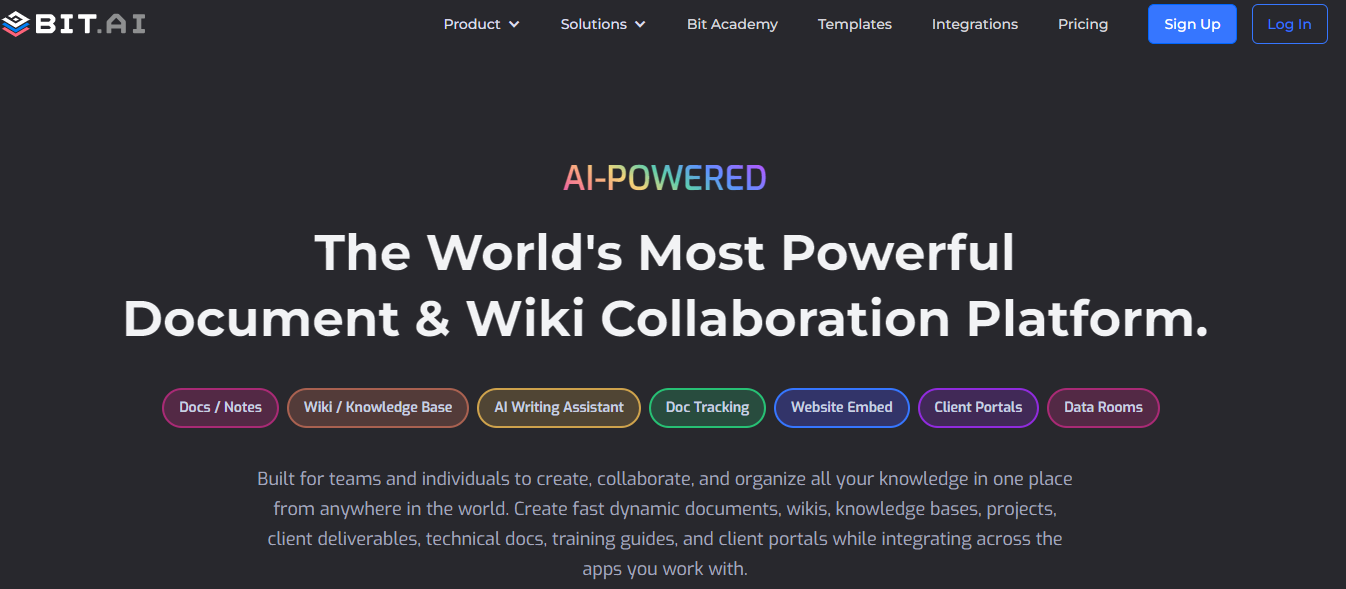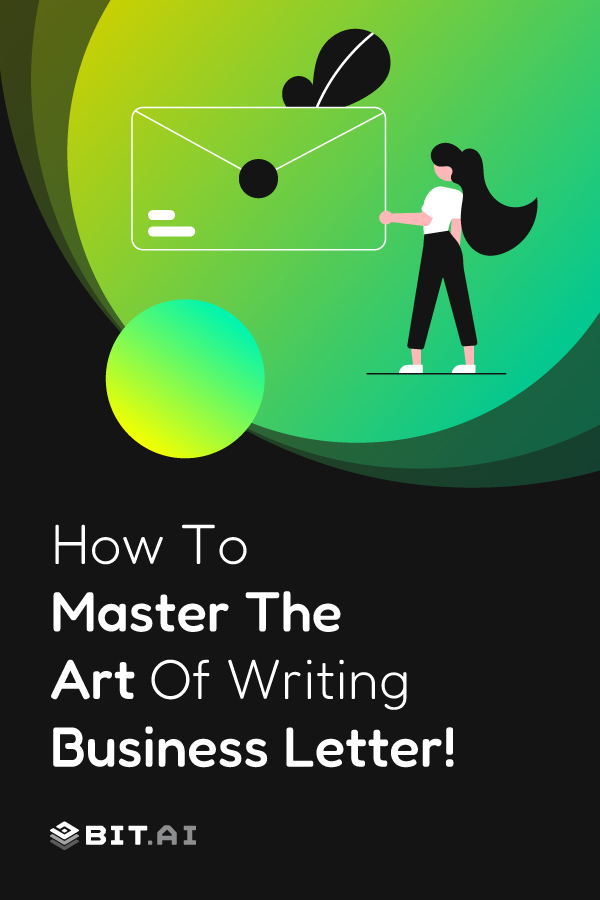What comes to your mind when you hear the term ‘business letters’? Let us guess! The entire concept of business letters might seem completely ancient to you. You might wonder if people even send those white envelopes with fancy letterheads anymore. Or if it’s just an outdated concept, replaced by emails and messages.
Studies show that a clear, well-written business letter can boost response rates by up to 50%.
Truth be told, in the business world, printed letters are a valuable and significant part of every communication strategy. According to a study, an office worker receives an average of 121 emails per day. This means that your letter has more chances of being read when it’s delivered via your mailbox instead of your inbox.
What is a Business Letter? (Definition)
A business letter is a professional, formal letter that is sent by one company to another. These letters can be used for professional correspondence between business clients, employees, stakeholders as well as individuals.
Whether you need to tell a potential client about your product, collaborate with another company, convince someone to attend your event, or give a thank you note – a well-written business letter can stand out.

Business letters demonstrate a level of professionalism and class, however, writing them becomes a tedious task when you are unfamiliar with the concept.
What information should you include, and how formal does it have to be?
How to address someone and how to close your note?
Is there a limit to the number of paragraphs you can write?
If you don’t have the answers to these questions, you are in the right place.
We have put together a guide so that you can master the art of writing business letters.
But, before that, let’s have a quick look at different types of business letters you might need to write at some point in your life.
Types of Business Letters
1. Cover Letters
First up, a cover letter is a one-page document that candidates submit along with their resumes. It takes the employer on a guided journey of their greatest career & life achievements.
No matter if you’re a student or an experienced professional, a cover letter is an important document to show your skills, experience, and why you’re fit for the position you are applying for.

Tips:
- Don’t try to fit your whole career in your cover letter. It should have a carefully curated collection of stories.
- Don’t state a skill that you don’t actually have. You’ll definitely regret it when you’re asked to use that skill in the interview.
- Keep it concise and to the point. The employer does not have time to sit down and read an entire memoir.
2. Business Invites
These letters are a formal way to reach out to a company or an individual and invite them to attend an event hosted by your company.
As business events tend to be formal, an invitation letter is most likely to be formal as well. But, if you are organizing a casual event, it should be reflected in your invite and tone.
Tips:
- Write the letter in such a way that it builds anticipation about the event.
- Clearly mention the date, time, and venue.
- Set a friendly follow-up to remind them of the event.
Worth a click 👉 Craft your business strategy with Bit.ai’s Business Plan Template
3. Complaint Letter
This letter is a way to formally express your disappointment formally. You can report a bad experience, poor customer service, or let a company know that their products didn’t meet your expectations.
The key to this letter is that it shouldn’t sound like you are nagging, but also shouldn’t lose its importance if you want to be taken seriously.

Tips:
- Don’t get too emotional or over-the-top angry. Just state the facts.
- Be cordial and professional. Let them know the entire story and how’d you like them to rectify their mistakes.
4. Letter of Resignation
A letter of resignation is a document that notifies your employer that you’re leaving your job. Whether you work at a coffee shop or a big-shot company, it’s proper protocol to submit a letter of resignation before you leave.
Also, if you have an urge to send an incendiary letter of resignation, don’t give in! You might cross paths with these people again.
Tips:
- Keep it simple, stick to the facts, and don’t start complaining. Resignation letters are not the right place for complaints & critiques.
- Thank your boss and/or the company for the opportunities and describe some of the key things you learned on the job.
- If you’re in a high-profile position, consider your words super carefully because your letter would likely be made public.
5. Order Letters
Also known as “purchase orders”, these letters are used to order things or buy material. They act as a legal record, documenting the transaction between the buyer and seller.
These letters are generally written by one business to another business to make an order or to modify it.
Tips:
- Be concise and clear to avoid any misunderstanding or confusion.
- Include everything the seller would need to deliver the order and get the payment.
- Provide contact information for future conversations or follow-up.
6. Letter of Recommendation
These letters intend to recommend someone for an internship, job, fellowship, or other such opportunities.
Before hiring an employee, many employers ask for such kinds of letters. It tells why the person the letter is about is a good person to hire and describes their strengths & abilities.

Tips:
- Be honest and don’t agree to write a letter to someone you don’t know.
- Use specific examples to highlight the person’s strengths, skills, and abilities.
- Include why you believe the candidate would excel in the role.

Many times, people overlook the importance of writing persuasive business letters because the concept just doesn’t interest them. As a result of which, people don’t know how to write a business letter.
Well, if you’re in the same boat, we’ve got your back.
Writing a clear and concise business letter isn’t a big deal, as long as you follow the established rules for layout and language.
Let’s learn how to craft a polished, professional business letter because we know that you don’t want to get the format wrong and look sloppy & unprofessional!
Read this next 💡 Business Competition: 11 Ways to Stay Ahead!
How to Write a Business Letter in 9 Simple Steps? (Format or Structure)
Step 1: Sender’s Information
If you want a reply, you need to understand how to address a business letter properly.
In this section, you’ve to write your address, contact number, and email address.
Many people include their full name at the top too. However, others think that it’s unnecessary because you are going to sign the letter with your name anyway.
Want to save some time?
Well, if your company has a letterhead, you can use that instead of typing out all the information.
Step 2: Date
Rather than abbreviating with numbers, write the entire date.
When you’re writing to American companies, use the American date format i.e, put the month before the day.
Example: May 20, 2024
Write the date before the month if you’re sending a letter in the U.K. or Australia.
Example: 20 May 2024
📗Note: A well-written business letter doesn’t just inform—it builds credibility and trust for your company.
Step 3: Recipient’s Address
This is the address where your letter will be delivered.
Write the recipient’s name, their title (Ms./Mrs./Mr./Dr), and their address. Make sure you’re as specific as possible so that it reaches the right destination.
If you don’t know the person’s name, a little research won’t harm you! Call the company or speak to the employees of the company to find out the name.
Example:
Mr. Mike Brown
Executive Director
XYZ, Inc.
602 Melrose Avenue
Los Angeles, California 90038
Tips:
- In case you’re unsure about a woman’s preference in being addressed, use ‘Ms’.
- If you think that your recipient uses ‘Dr’ or has some other title, use that. (Usually, people don’t mind being addressed by a higher title than they actually possess, but they don’t wanna be addressed by a lower one.)
Step 4: The Salutation
A salutation isn’t just a simple greeting, it’s an indicator of respect. You can choose the salutation based on how well you know the person and the context of your letter.
If you know the person you’re sending the letter to, and you mostly address them with their first name, it’s okay to use their first name in the salutation. (For example, Dear Mike)
However, there are exceptions to this case too.
Let’s take an example.
The dean at XYZ college might be your uncle, but if you’re writing to him regarding an official matter, it would be best if you use the salutation “Dean (Last Name)” or “Dr. (Last Name)” because there’s a chance that other people handle his letters and emails.
If you don’t know someone, always use the personal title and their last name.
If you are not sure of someone’s gender, you can use their full name. (For example, Dear Taylor Brown)
If you don’t know specifically whom you’re sending the letter to, use “to whom it may concern.”
Whatever the situation is, make sure that you end the salutation with a colon. (Not a comma!)
Step 5: The Body
This is the most important part of your letter. The body should contain a few (mostly three) concise paragraphs, each with a clear purpose.
If you want your reader to get the best possible impression, keep your message crystal-clear.
In the opening paragraph, introduce yourself and clarify the point of your letter. You can also mention mutual connections here, in case the recipient doesn’t know who you are.
Not sure how to start?
You can write “I am writing to you regarding…” as the opening line.
In the next paragraph, go into the details of your main point.
In the closing paragraph, briefly summarize your points, restate the letter’s purpose and tell your planned course of action.
Tip💡 Try to avoid lengthy, meandering sentences and just get straight to the point.
Step 6: Closing
Here, you’ll mention that the recipient can contact you or your team if he has any concerns or questions. You can also thank him or her for reading the letter.
Make sure that the closing isn’t more than two sentences long!
For instance, you can write:
- Kindly email me at (your email) to schedule a meeting. Thank you!
- If you have any queries, don’t hesitate to call me at (your contact number).
Step 7: Complimentary Closing
This is a short remark that marks the end of your letter. You’ve got a lot of options here but choose the one that reflects the formality of your relationship.
Recommended formal closings include “Yours Truly” or “Respectfully” or “Sincerely”.
If your letter is less formal, you can write “All the best” or “Thank you” or “Regards” or “Best”.
Regardless of what you choose, add a comma to the end of it.
Step 8: Signature
Below the complimentary close, sign the letter.
Make sure that you skip at least four lines so that there’s enough room for your signature. After that, type out the name that has to be signed.
You can include your job title below your full name too.
Here’s the format:
Your signature
Typed full name
Title
Step 9: Enclosures (If applicable)
If you plan to send anything along with your business letter, you can indicate this simply by writing Enclosures after the signature.
Consider it the print version of “please find attached” for emails.
If you have included many documents, make a list that tells the recipient what he needs to look for in the envelope.
For example:
Enclosures (5): 2 Brochures & 3 Flyers
When it comes to a business letter, using the right justification and accurate structure isn’t good enough.
You need to strike the right tone.
You need to ensure that your recipient understands your letter’s intent.
Let’s uncover the secrets of writing a business letter that stands out!
Also worth checking out 👉Crafting a proposal soon? Use this Free Business Proposal Template
Tips on Writing Business Letters
1. Keep it short and simple
Word choice can make or break the effectiveness of your business letter. Avoid flowery descriptions and jargon unless you’re sure the recipient will understand what you’re talking about.
As Benjamin Franklin once said, “Time is money.”
Keep the letter clear and concise. Get to the point as quickly as possible.
2. Right Tone
Keep your tone conversational, yet professional. You don’t want to come off as arrogant or boastful, do you?
Save casual language for emails and messages – your printed business letters should be a little professional.
With that said, make sure that you sound like yourself. You don’t want your letter to come off as something written by a machine!
Tip: Use verbs that have an active voice instead of passive. Active voice shows that you care and that you’re responsible for your actions. (Example: “We will deliver it to you by December 15.” Not… “Your item will be delivered by December 15.)
3. Proofread, proofread, and proofread!
As you might have already understood, a business letter is not the place to be sloppy. Triple-check it for spelling and grammatical errors.
Also, don’t forget to review the spelling of your recipient’s name. If you spell it incorrectly, that’ll increase the chances of your letter winding up in the trash.
At all costs, avoid grammatical mistakes. They suggest that you lack professionalism and attention to detail. Make sure to also do a spell check while you’re at it.
Read this next✨ Thank You Letters: What are they & How to Write a Perfect One?

Through its intuitive and integrated tools, Bit.ai has simplified the often complex and long process of writing a business letter.
Using Bit.ai, you can create a ‘live’ business letter that highlights your text, has the perfect format, is easy on the eyes, and is great to look at! You can easily share this letter with the recipient, internal teams, and interested stakeholders.
The best part? You can work with your team in real-time co-editing and use inline comments to bring your colleagues to the same place to discuss work and make decisions related to your business letters.
Bit’s workspaces are a smart way to keep all of your knowledge and work in one space for your team to access. You can create many workspaces. Be it for personal use, around teams, departments, clients, or the entire company.
Using bit.ai will bring a bit of happiness into your workday, while also helping your business letter to become more effective!
Our team at bit.ai has created a few awesome business templates to make your business processes more efficient. Make sure to check them out before you go, your team might need them!
Final Words
Did you know that paper-based communication is more memorable and enriching than communication done through screens?
Another reason for you to send a printed business letter!
Yes, an e-mail might be the quickest and the most convenient way for business conversations, but a printed business letter will never lose its charm and effectiveness.
Also, now that you know what you’re doing, writing business letters is going to be a cakewalk for you.
Isn’t it way more simple than you imagined?
Are you ready to write a business letter using bit.ai? Let us know how it goes by tweeting us @bit_docs.
FAQs
1. What are the 7 common business letters?
There isn’t a universally agreed-upon list of exactly seven, but some of the most frequent types of business letters include:
• Cover Letter: Introduces yourself and your qualifications for a job application (goes with your resume).
• Inquiry Letter: Asks for information about a product, service, or company.
• Order Letter: Officially places an order for products or services.
• Complaint Letter: Expresses dissatisfaction with a product, service, or experience.
• Sales Letter: Persuades the reader to buy a product or service.
• Follow-up Letter: Checks in on something previously discussed, like an application or order.
• Thank You Letter: Expresses gratitude for an interview, service, or other reason.
2. What are the 7 C’s of a business letter?
The 7 C’s are a helpful guide for crafting strong business letters. They stand for:
• Clarity: Express your ideas clearly and avoid ambiguity.
• Conciseness: Get to the point and avoid unnecessary words.
• Completeness: Include all the information the recipient needs.
• Consideration: Be mindful of your audience and tailor your tone accordingly.
• Courtesy: Maintain a professional and respectful tone throughout.
• Correctness: Ensure proper grammar, spelling, and punctuation.
• Coherence: Organize your thoughts logically and ensure a smooth flow.
3. How to write a good business letter?
Here are some general tips for writing effective business letters:
• Start with a professional format: Use a clear layout with your contact information, date, recipient’s details, salutation, body, closing, and signature.
• State your purpose clearly: Get to the point quickly in the opening paragraph.
• Maintain a professional tone: Avoid informality, slang, or overly emotional language.
• Proofread carefully: Ensure there are no errors in grammar, spelling, or punctuation.
4. What is the structure of a business letter?
A typical business letter follows this structure:
• Heading: Your contact information and date.
• Recipient Information: Name, title, company, and address of the person you’re writing to.
• Salutation: A formal greeting like “Dear Mr./Ms. Last Name”
• Body: The main content of your letter, with paragraphs for each point.
• Complimentary Close: A formal closing like “Sincerely” or “Regards”
• Signature Line: Your typed name and title (optional: signature for physical copies).
• Enclosures (optional): Mention any additional documents included.
5. What format should I use for a business letter?
Business letters typically follow a standard format. This includes:
• Letterhead: If you’re writing on behalf of a company, include the company letterhead at the top.
• Date: Include the date the letter is written.
• Information about the recipient: Write down their name, job title, company, and address.
• Address: Start your letter with a formal phrase like “Dear Mr./Ms. Last Name” or “Dear [Title] [Last Name].”
• Body: The body of your letter is where you say what you want to say in a clear and concise way.
• Closing: Use a professional closing like “Sincerely,” “Regards,” or “Best regards,” followed by your typed name and signature (if sending a physical copy).
Read out these artices 👉
- Formal Letter: What Is It & How to Create it?
- Proposal Letter: What is it & How to Write it?
- Operational Efficiency: Definition, Importance & Ways to Improve it!
- Apology Letter: Definition, Format, Tips & Examples!
- Business Report: What is it & How to Write it? (Steps & Format)
- Business Requirements Document (BRD): What, Why, and How to Write?
- How to Write a Business Case: Step By Step Guide

Related posts
Bit.ai | Watch to Learn More
What is Bit.ai?
Bit.ai is an innovative AI-driven knowledge and Document Managment suite designed to empower knowledge workers by streamlining the creation of, documents, wikis, and notes. With an intuitive interface and seamless integration, Bit.ai acts as a versatile assistant to help you collaborate, generate, organize, and visualize your ideas effortlessly. Whether you are drafting a report, managing a project, collaborating with your team or clients, or brainstorming new concepts, Bit.ai brings intelligence and creativity to every aspect of your work process.


